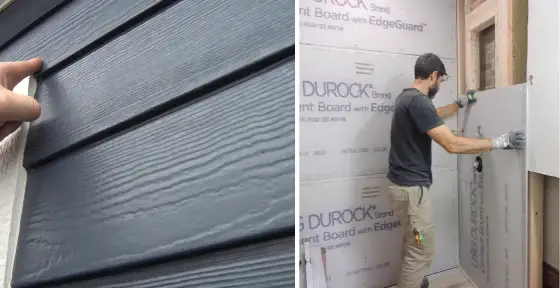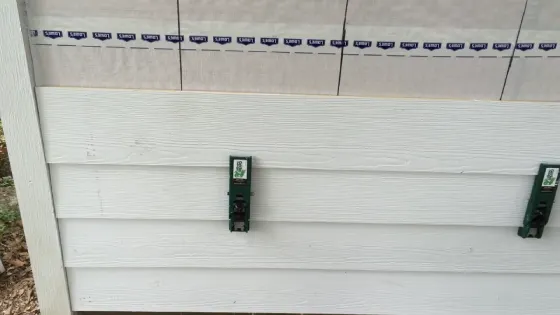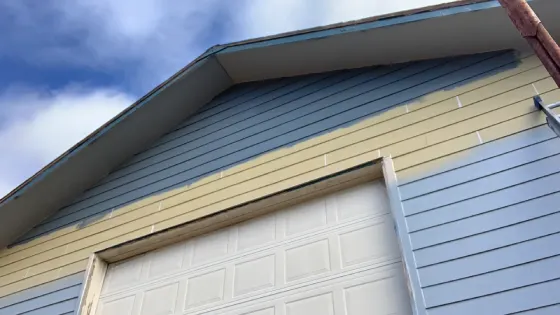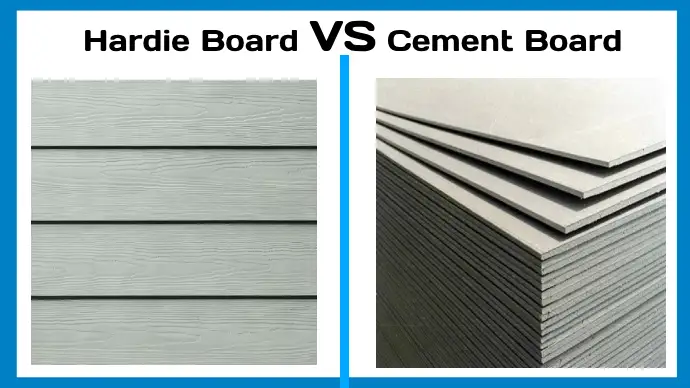Last Updated on September 13, 2023
When choosing the best exterior building material for siding and paneling, homeowners and contractors have a range of options to consider. Hardie and cement boards are among the most popular options because they offer unparalleled longevity and resistance to harsh weather conditions and pests.
Although Hardie board and cement board share some similarities, it is crucial to recognize their significant differences. The noticeable difference between these materials is their weight. HardieBacker notably outweighs cement board, making it a more convenient choice.
While both materials are strong and low-maintenance, cement boards require extra care to prevent water damage. Choosing these two materials will ultimately depend on various factors, including budget, climate, and personal preferences.
By understanding these key differences, find out which building material best suits your project.
Hardie Board vs Cement Board: Key Differences

This comparison is a must-read if you’re looking for long-lasting and sturdy materials for your construction projects.
These are some of the main differences between them:
1. Composition and manufacturing
3. Waterproofing and resistance
One: Composition and Manufacturing
Comparing Hardie board and cement board, it is important to note their composition and manufacturing process. Hardie board is composed of cement, cellulose fibers, mica, and sand with small amounts of additives that enhance its durability.
In the manufacturing process, the ingredients are compressed under high pressure, resulting in a rigid board that can be used for lots of things. On the other hand, cement boards are made up of Portland cement and sand, which are reinforced with either fiberglass or paper mesh.
Cement board is commonly sold in 3 x 5-foot sheets, with thickness options ranging from 1/4 inch to 5/8 inch. Compared to Hardie boards, cement boards weigh more. A 1/4-inch cement boards weigh approximately 30 pounds, while a 1/2-inch cement board can weigh up to 44 pounds.
Weight-wise, Hardie board weighs approximately 2.3 lbs per square foot, making it comparatively lighter than cement board.
Two: Applications
Hardie board is primarily used as an exterior siding material for both residential and commercial buildings. Its products, such as shingles, clapboards, sheets, corners, and trims, are versatile and work as tile walls, flooring underlayment, and bathtub walls.
Alternatively, cement board is typically used as a substrate for vertical tile on wood or steel studs, and thin sheets of cement board allow bending for curved surfaces. Cement board is commonly used for tile floors, kitchen counters, and backsplashes.
Three: Waterproofing and Resistance
Hardie backer board with HydroDefense Technology boasts a no-water-penetration feature after undergoing a 48-hour hydrostatic test. At the same time, Hardie siding can wick moisture when installed on walls and absorb water when flat on the ground.
In contrast, the cement board alone is water-resistant, not waterproof, and requires sealing for waterproofing. Complete waterproofing requires a waterproof membrane or coating.
Four: Durability and Maintenance
Hardie board is known for its durability and longevity, making it a favorite for many homeowners. It can withstand weather conditions and maintain its quality for up to 50 years. Power washing is also an effective cleaning method for Hardie boards.
Cement boards are also durable and resistant to cracking and warping, but proper maintenance is required for cement boards exposed to water for extended periods. Overall, both materials are known for their durability and strength.
Five: Cost
Hardie Board siding is more expensive than cement board, but its durability can save homeowners money on maintenance and repairs in the long run.
Hardie Board also can potentially add value to a home and increase resale value. Cement boards like Hardie Backer Board are competitively priced and popular among builders for reliable underlayment.
Although fiber cement and composite materials are initially more expensive, maintenance and repair costs can be reduced over time.
Is a Hardie board suitable for nailing or screwing?

If you wanna install Hardie’s siding, you’ll have both options: screwing or nailing. The preferred method is blind nailing, where the course above hides the fasteners. Fasteners should be placed between 1 to 3/4 inches from the top edge and no closer than 3/8 inches.
The use of stainless steel or hot-dipped galvanized nails is recommended. While manual nailing is possible, a pneumatic nailer is preferred for efficiency. You can use either nails or screws for Hardie board lap siding, but follow the manufacturer’s guidelines for placement and use of fastener.
Does the cement board require nailing or screwing?
To attach cement boards to your project, use screws specifically designed for concrete board installation with a corrosion-resistant coating. Cement boards must be nailed or screwed. It’s crucial to use the right screws to ensure that the boards remain securely fastened over time.
If the manufacturer doesn’t provide these screws, look for ones with a corrosion-resistant coating. This will help ensure that your cement board is durable and long-lasting.
Should cement boards be painted?
Painting cement boards will improve their appearance and make them last longer. Although they are more durable than wood or vinyl siding, cement boards can still be damaged by weather, moisture, and UV rays. Painting provides extra protection and aesthetic benefits.
Due to its adhesion, flexibility, and resistance to fading and cracking, acrylic latex paint is a suitable option. You can paint your cement board siding to protect and beautify your home’s exterior while achieving long-lasting results.
Is it necessary to paint Hardie boards?

Painting pre-primed Hardie Board siding within 180 days of installation is crucial to protecting your investment. If the siding becomes too dry, cracking can occur, leading to expensive repairs. To avoid this issue, hire a professional to paint the siding with high-quality paint and proper techniques.
Ensure that the paint is applied evenly with full coverage and that edges and seams are sealed. Regular maintenance and timely painting can ensure a beautiful, long-lasting finish.
Choosing the Right Board: Hardie vs. Cement
When deciding between Hardie board and cement board, it’s important to consider their differences. Both materials are strong and durable, but Hardie board is designed for nailing or screwing, while cement board requires special screws or nails with bigger heads.
It may also be necessary to add an additional primer layer before painting certain types of cement boards.
To make the best choice, consider factors like ease of installation, durability, moisture and fire resistance, and aesthetic preferences. Both materials can perform well in a wide range of applications when installed properly. Choosing either a Hardie board or a cement board depends on your specific needs and preferences.



